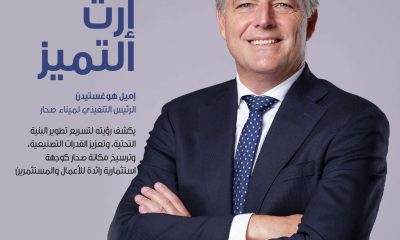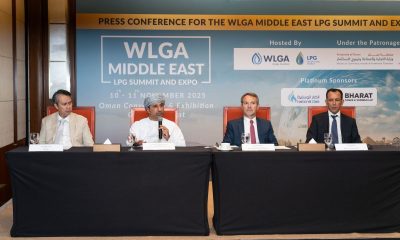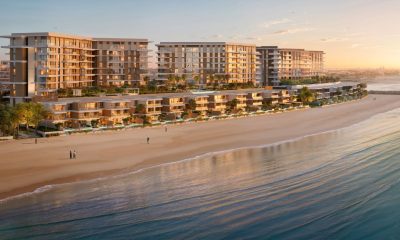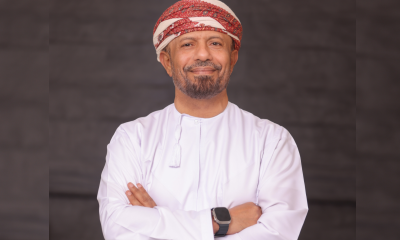Oman 2015
Economic Diversification
Oman is on course to run a bigger than expected budget deficit this year, as declining global energy prices hit the country’s finances.

Oman is on course to run a bigger than expected budget deficit this year, as declining global energy prices hit the country’s finances. The days of rich oil revenue funding mega infrastructure projects are gone and the authorities are left with no other option but to make fiscal adjustments and arrange alternative sources of funds for its development programmes.
After years of budget surpluses, the country is heading for a whopping deficit. The budget deficit surged ahead to RO1,918.5 million in the first half of this year, equivalent to 6.1 per cent of gross domestic product (GDP). This is against a surplus of RO250 million for the same period in 2014 and a government target of RO2.5 billion deficit for the entire year, primarily due to a plunge in oil prices. The country planned its budget for this year based on its expectation of an oil price of $75 per barrel, much lower than the average price so far this year. International Monetary Fund projects a whopping deficit of around RO3.5 billion for the current year. Also, it is estimated that the deficit will widen to 8 per cent of gross domestic product this year, assuming an oil price of $75 per barrel for the budget estimate. The government’s total revenue dipped by 36.3 per cent to RO4,579.7 million for the first half, from as high as RO7,194.3 million for the same period of 2014, mainly on account of a drastic fall in oil revenue. Net oil revenue plunged by 46.1 per cent to RO2,846.8 million from RO5,277.9 million. International credit rating agency Standard and Poor’s said the Sultanate and Bahrain were the Gulf states most vulnerable to a prolonged slump in oil prices, mainly due to relatively low fiscal reserves and lack of economic diversification. According to IMF, the breakeven oil price for most GCC states is above $80 per barrel.
Average price of Oman Crude dipped by 43.1 per cent to $59.9 per barrel in the first seven months of 2015 from $105.42 a barrel for the same period of 2014. However, the crude oil production was up by 3.1 per cent at 206.70 million barrels (or 975,000 barrels per day) in the first seven months of this year. This is against the government projection of an average daily crude production of 980,000 barrels this year. Also, public expenditure declined by 6.4 per cent to RO5,798.2 million for the first half of 2015, from RO6,194.3 million for the same period last year. Of this, current expenditure inched down by 0.7 per cent to RO3,939 million from RO3,968.1 million, while investment expenditure fell by 6.8 per cent to RO1,248.4 million for the first half of 2015 from RO1,393.5 million for the same period last year. Oman needs to limit growth to public sector wages and reform the system of subsidies for fuels, electricity and water. The government also needs to further diversify the economy and increase non-oil revenue through direct and indirect taxation.
As much as 40 per cent of gross domestic product in Oman and around 80 per cent of government revenues come from the exports of oil and natural gas. Oil revenue for this year is estimated to contribute 79 per cent of government revenue this year. These revenues enable the government to provide substantial subsidies to the citizens. With revenues from hydrocarbon resources plunging substantially, the authorities are left with no other option but to go for fiscal adjustments (including harsh measures like partially withdrawing subsidies), find alternative sources of revenues like bonds, improve efficiency and drastically cut expenditures. The decline in oil prices only highlighted how necessary it was for Gulf states to take far reaching measures to safeguard their future when oil exports will not enable them to cover government spending. The government could fund the deficit by raising debt from overseas markets since the Sultanate has a better credit rating and the debt to gross domestic product ratio is low, compared to many other countries. Also, the government could reduce subsidies, extend implementation of some of the projects to bring down expenditure. There is an indication of cutting expenditure and improving efficiency on several fronts.
The IMF said that Oman had to enact major changes to its regime of grants and subsidies for the country to overcome revenue challenges. Without any reforms at this stage, the country will either have to use its buffers or increase debt, and there could be spillovers from the fiscal sector to the rest of the economy. There are strong indications that the government is planning to gradually cut fuel subsidies, which is a financial burden for several years, from next year onwards. However, this will be implemented with minimum financial burden to the citizens.
The Sultanate’s government has been contemplating withdrawing fuel subsidy for the last couple of years, but no decision has been taken so far due to its far-reaching implications on the entire people, including poor. In 2014, while subsidies fell by 17.11 per cent, Oman still had a bill of about RO1.69 billion. The fall in subsidy was mainly on account of plunging oil prices.
Total subsidy and exemption estimate for 2015 is at RO1.8 billion, mainly for providing subsidy for petroleum products, interest subsidy for housing loan, electricity and water and some essential food items. In fact, the overall subsidy constitutes almost 13 per cent of budget expenditure, which is a growing concern for the government. The IMF, which has been asking for bringing in major changes in the country’s subsidy regime, estimates Oman’s per capita spending on energy subsidies at $221.95 this year. In a move to mobilise additional resources for meeting deficit, the government has already announced its RO200 million worth sukuk issue. The rial-denominated issue, which was opened for subscription in October, will have a tenor of five years, with its profit rate set through a uniform price auction. The issue was for institutional investors – usually taken to mean fund managers, banks and other institutions, as well as wealthy individuals – with a minimum subscription of RO500,000.
There will be frequent issues of sukuk in near future, which will help to diversify the financial markets and allow Islamic institutions to park their excess funds. This will also enable Oman government to depend on a reliable source of fund. Oman government is trying to enhance revenue from alternative sources on a war footing, while reducing expenditure to minimise anticipated deficit this year. A move to raise royalty fee of mining firms, a rise in natural gas prices, freeze on new recruitment in the public sector since the beginning of this year are all part of a major exercise to meet both ends. While announcing the budget proposals, the government had said that the budget deficit would be covered by way of domestic borrowing, issuing Islamic bond or sukuk, surplus from the previous budget and transfer from general reserves.
The country’s export scene was also not promising this year, which was in line with the regional and global economies. The Sultanate’s total exports for the first four months of 2015 declined by 32.9 per cent to RO4.53 billion from RO6.76 billion for the same period last year, mainly due to plunging commodity prices. The fall in export revenue was mainly on account of a record plunge in oil and gas prices in international markets and re-exports. Exports of crude oil, petroleum products and liquefied natural gas plunged by 36.5 per cent to RO2.83 billion in the first four-month period of 2015 from RO4.46 billion in the same period last year. Of this, crude oil exports showed a 38.6 per cent fall, while liquefied natural gas exports were down by 18.5 per cent. But crude oil production recorded a 3.2 per cent rise in oil production for the January–August period this year, at 237.36 million barrels, compared to 230 million barrels for the same period of 2014. Boosted by recent highs, Oman’s daily average production for the January–August period of 2015 stood at 976,800 barrels per day (bpd), against 946,600 bpd in the same period of 2014.
Likewise, non-oil exports plunged by 20 per cent to RO1,007.8 million from RO1,260 million, according to the latest monthly report released by National Centre for Statistics and Information (NCSI). Among various product segments, plastics and rubber products plummeted by 33.9 per cent to RO83.5 million. The Sultanate’s export promotion agency is targeting a 15 per cent growth in non-oil exports this year. Ithraa has been taking several initiatives to enhance non-oil exports, which include visits of trade delegation, participation in international exhibitions, business-to-business meetings and market studies in potential export markets. The Sultanate is looking for enhancing non-oil exports to its non-traditional markets like Singapore, Ethiopia, Iran and Sudan. The country has conducted several market studies in these countries to find out the acceptance of Omani products in these markets.
The country’s real gross domestic product growth is projected at 3.2 per cent and 3.4 per cent in 2015 and 2016, respectively, by global rating agency Standard & Poor’s. This is against Oman government’s projection of a 5 per cent growth in real GDP.
The agency’s GDP growth projection was 2.5 per cent in both years for Saudi Arabia, 4 per cent and 4.5 per cent for Qatar, 1 per cent and 2.3 per cent for Kuwait and 1 per cent and 2 per cent in 2015 and 2016 for Abu Dhabi, respectively. The sharp drop in oil prices since mid-2014 is likely to lead to weakening economic, external and fiscal profiles for the region. The Sultanate’s nominal GDP is projected at $75 billion and $82 billion in 2015 and 2016, respectively, while real per capita GDP is estimated at $18,231 and $19,124 for these two years, respectively. The Standard & Poor’s also lowered the rating on Bahrain and Oman. Most GCC economies depend on hydrocarbon revenues and are, therefore, vulnerable to a sharp and sustained decline in oil prices, absent substantial offsetting financial buffers.
The policies aimed at economic diversification away from hydrocarbons take time to bear fruit, be it economic, external, or fiscal. In the short term, there is little that GCC governments can do to diversify away from hydrocarbons. As a result, the decline in the oil price has put downward pressure economic, external and fiscal assessments for the GCC and other global oil exporters. To overcome falling oil revenues, Oman should focus more on its economic diversification plans and should make more concentrated efforts to attract additional foreign investment. Fast development of Duqm Special Economic Zone will enable the Sultanate to attract the much-needed foreign investment. However, the infrastructure that needs to be put in place in Duqm requires foreign investment in the first place.
Therefore, in order to attract foreign direct investment, a platform should be provided for investors to come and make investment, which necessitates creating a business-friendly environment through reducing paperwork and promoting one-stop shop services. On the inflation front, Oman was in a comfortable position. The country witnessed lowest inflation rates in most part of the year, with inflation touching as low as 0.46 per cent in July this year – the lowest in GCC states. Among the GCC member states, the highest inflation rate was recorded in the UAE at 4.43 per cent, followed by Kuwait at 3.62 per cent, Saudi Arabia at 2.2 per cent, Qatar at 1.6 per cent, Bahrain at 1.1 per cent, and the Sultanate at 0.46 per cent. Growth rate of non-oil sector is expected at 5.5 per cent and the main focused areas include construction, electricity and water, trading, services and manufacturing industries.
-

 Alamaliktistaad Magazines2 months ago
Alamaliktistaad Magazines2 months agoAlam Al Iktisaad – September 2025 Edition
-

 News2 months ago
News2 months agoKitchenomiKs Secures Investment of US$3.2M Led by Jasoor Ventures
-

 News2 months ago
News2 months agoOman Inaugurates ‘Hadatha’ – Its All-New Cybersecurity Center
-

 Banking & Finance2 months ago
Banking & Finance2 months agoOman Arab Bank Highlights Its Ongoing Strategic Initiatives and Future Plans
-

 News2 months ago
News2 months agoIEA Expects Global Oil Market to Remain Oversupplied in 2026
-

 Energy2 months ago
Energy2 months agoWLGA Middle East LPG Summit & Expo 2025 to be held at OCEC on November 10 and 11
-

 Real Estate2 months ago
Real Estate2 months agoAl Mouj Muscat Unveils Azura Beach Residences Phase 2: A New Chapter in Waterfront Living
-

 Leaders Speak1 month ago
Leaders Speak1 month agoDhofar International Development and Investment Company: Driving Sustainable Growth and Strategic Synergies in Oman’s Investment Landscape































You must be logged in to post a comment Login